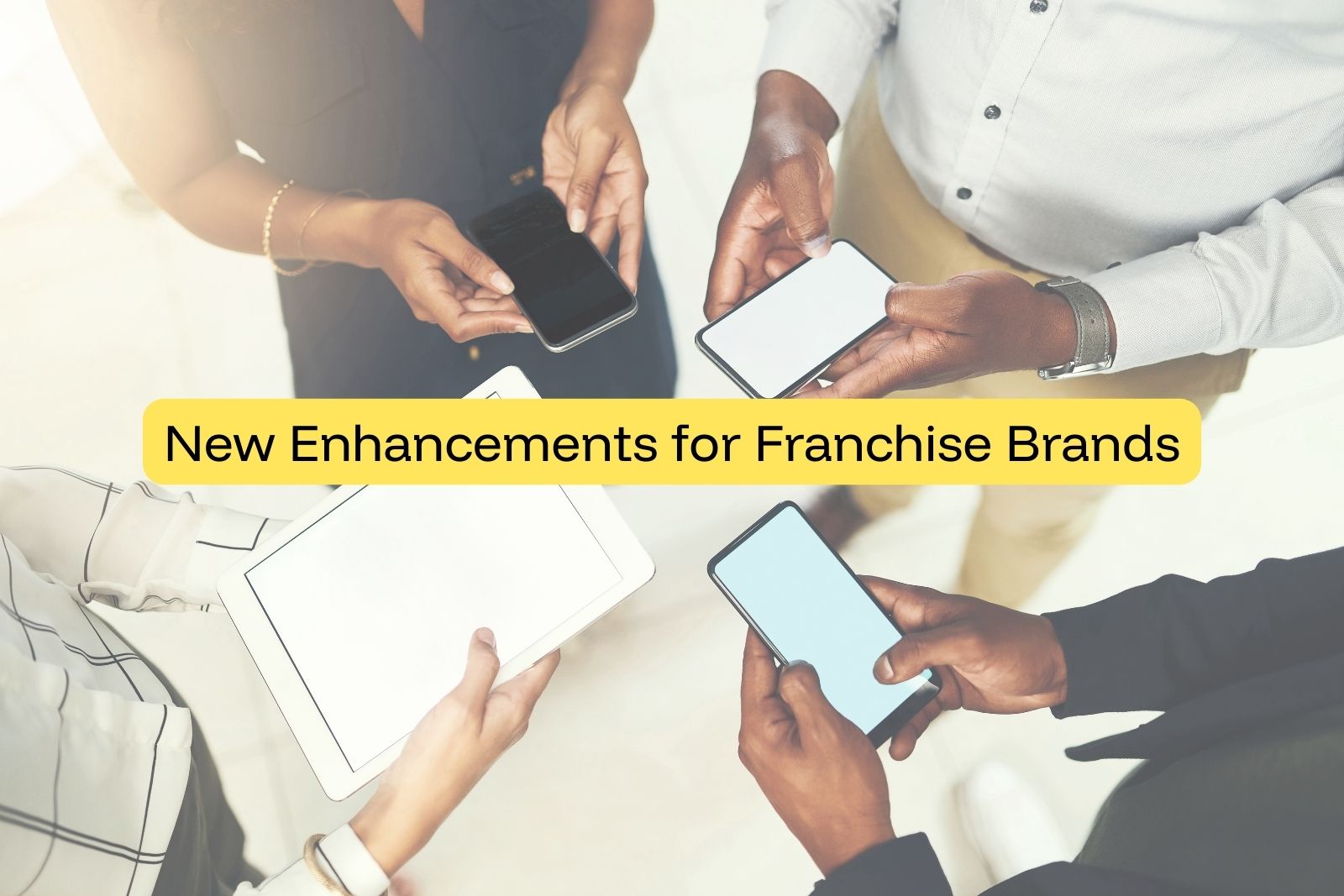
Set Up Broadcast Messaging With SMS In 2024
The simplicity of text messaging offers businesses a powerful way to connect with their audience. Almost everyone has a mobile phone within arm’s reach at all times. This makes text messaging one of the most accessible ways to get your message seen.
Whether you’re sending reminders or important updates, broadcast messaging helps you create a direct connection with your audience.
In this article, we’ll go over how to implement broadcast messaging into your marketing efforts. We’ll cover how to create engaging messages and integrate them into your overall strategy.
What is Broadcast Messaging?
Broadcast messaging is a practical tool for businesses that allows sending a single text message to a large group of recipients at once.
This method is highly effective for communicating important announcements, updates, or promotions directly and quickly.
How Broadcast Messaging Works
Broadcast messaging is a quick process designed for efficient communication with a large audience. Here’s how it generally works:
Creating the Message
The effectiveness of SMS broadcasting begins with the message itself. The text should be clear, concise, and crafted with the audience in mind. Whether it’s promotional content, important updates, or critical alerts, the message should directly address the recipient’s needs or interests.
Selecting the Audience
Businesses need to identify who needs to receive the message. This could be all customers, specific customer segments based on their buying behavior, or even employees in certain departments.
Sending the Message
Using a specialized text messaging platform, the message is dispatched to the chosen recipients. These platforms often provide tools that allow scheduling, automation, and immediate dispatch, ensuring the broadcast message is delivered at the optimal time.
If it is imperative that messages get there as quickly as possible, many SMS providers provide high-speed lines for sending hundreds of thousands of messages out quickly.
Monitoring the Campaign
Throughout this process, it’s essential to monitor the performance of your broadcast messaging campaigns. This includes tracking delivery rates, open rates, and engagement metrics to understand the effectiveness of your messages.
Benefits of Broadcast Messaging
Broadcast messaging offers numerous advantages for businesses and organizations looking to improve their communication strategies. Below are some of its key benefits:
Immediate Delivery and High Read Rates
SMS messages are delivered almost instantly and are typically read within minutes of receipt. This makes broadcast text messaging exceptionally effective for conveying urgent or time-sensitive information.
Unlike emails, which may not be checked frequently, or social media posts, broadcast text messages catch the recipient’s attention immediately.
Direct Reach to Customers
Broadcast text messaging provides a direct line of communication to customers. Every message lands right in the recipient’s SMS inbox, a place few people ignore.
This direct reach ensures your customers not only receive messages but also read them, which is critical for timely announcements or promotional messages.
High Engagement Levels
Text messages typically see open rates of over 98%, outperforming other communication channels like email. The personal nature of SMS, combined with its brevity, encourages higher engagement from recipients.
People are more likely to read and respond to a broadcast text message, which is great for driving actions such as sales, registrations, or feedback.
Personalization Opportunities
Despite being used as a mass messaging tool, broadcast text messaging can also be personalized.
Modern SMS solutions like Textellent offer dynamic fields that allow businesses to insert personal details like names, dates, times, or personalized offers.
How Can Businesses Use Broadcast Messaging?
Broadcast messaging is a versatile way for businesses to reach a large audience effectively. Here are several ways businesses can use it to boost their marketing efforts:
Marketing and Promotions
Businesses can use broadcast text messaging to send out promotional offers, discounts, or announce new product launches. Texts can include coupon codes or links to sales pages to drive immediate traffic and boost sales.
Timely Alerts and Updates
Broadcast messaging is perfect for sending urgent updates or important alerts, such as changes in business operations, unexpected closures, or safety warnings. The immediacy of text messaging ensures that recipients receive and read these updates quickly.
Appointment Reminders
Healthcare providers, service centers, and other appointment-based businesses can reduce no-show rates by sending appointment reminders via text. These messages can include date, time, and location details, and even allow recipients to confirm or reschedule.
Customer Engagement
Regularly scheduled updates, tips, or insights relevant to customers’ interests can be distributed via broadcast messaging. This ongoing engagement helps build customer relationships between the brand and its customers.
Event Reminders and Updates
For businesses that host events, broadcast messaging can be used to send reminders to attendees about event details like time, location, changes in the schedule, and what to expect. It helps increase attendance rates and keeps participants informed throughout the event.
Feedback and Surveys
Sending satisfaction surveys or requests for feedback through broadcast messages can help businesses gather valuable insights from their customers quickly. They can use this feedback to improve services and products.
Tips for Crafting Effective Broadcast Messages
Effective broadcast messages ensure that your communication is clear and engaging and prompts the desired response from recipients. Here are some practical tips for creating broadcast messages that resonate with your audience:
1. Gain Explicit Consent
For any promotional messages, explicit consent from recipients is legally required. This consent must be clear, informed, and freely given, meaning recipients are aware that they are opting to receive messages from you.
Unlike promotional messages, informational or critical alerts, such as emergency closures or weather-related warnings, do not typically require prior consent. However, keeping records of when and how consent was obtained is essential for compliance purposes.
2. Keep It Concise
Your SMS broadcast should be brief and to the point. Avoid overwhelming your audience with too much information. You should stick to the essential details and direct recipients to where they can learn more if necessary.
3. Use a Clear Call-to-Action
Every broadcast message should include a clear and compelling call to action (CTA). Tell your audience exactly what you want them to do next, whether it’s visiting a website, heeding evacuation instructions, or replying to the message. Make sure the CTA is easy to understand and act upon.
4. Personalize When Possible
Personalization can increase the effectiveness of your messages. You can use the recipient’s and sender’s name and tailor the message based on their preferences or location. This can make the message feel more relevant and increase engagement.
5. Time Your Messages Appropriately
The timing of your message can greatly impact its effectiveness. Consider the best time to reach your audience when they are most likely to read and respond. It’s not advisable to send messages too early in the morning or late at night.
6. Ensure Clarity and Accuracy
Make sure your message is clear and free from any ambiguity. You should double-check for typos and grammatical errors and ensure that all information is accurate and up-to-date. A message that is difficult to understand or contains errors can impact your brand’s credibility.
7. Segment Your Audience
Not all messages are suitable for your entire audience. Segment your contact list based on demographics, behavior, or purchase history to ensure that messages are relevant to each group. Tailored messages are more likely to result in higher engagement and conversion rates.
How a Texting Solution Helps With Broadcast Messaging
Integrating a texting solution into your broadcast messaging strategy improves how you communicate with a wide audience. A business texting service provides a centralized platform for managing all your messaging needs.
One of the standout features of using a texting solution is the ability to automate routine communications that would otherwise be tedious to organize and execute.
Automation ensures that these communications are consistently delivered without the need for daily manual input. This not only saves time but also reduces the likelihood of human error.
Personalization is another huge advantage. Modern texting solutions allow you to tailor messages, which increases engagement rates. Recipients are more likely to respond positively to content that feels specifically crafted for them.
Whether you’re sending a few hundred or several thousand messages, a robust texting solution ensures that your communications are delivered efficiently, even during peak traffic times.
How to Improve Your SMS Marketing with Textellent
Implementing a sophisticated texting solution like Textellent can boost your communication strategy while driving engagement and conversion. Consider how other aspects of your business could leverage texting too, such as the appointment setting and management processes.
Textellent offers advanced scheduling capabilities through texting, simplifying the entire appointment process from start to finish. Consequently, that makes it easy to use their tools or easily integrate with third-party scheduling tools.
Unlike basic scheduling tools, Textellent offers comprehensive texting at various stages of the customer journey.
Your pre- and post-appointment messages can be customized to ensure important forms are completed prior to meetings, reviews are collected, and additional appointments are secured. This can directly contribute to increased revenue for your business.
Segmentation capabilities in Textellent allow you to segment audiences based on product preferences, events attended, or specific actions taken. This targeted approach ensures that each message is highly relevant to its recipients to increase engagement and response rates.
But what sets Textellent apart from other texting solutions?
Textellent excels in lead generation, nurturing, and follow-up. The platform can automatically send personalized messages immediately upon an inquiry, ensuring that potential leads receive timely attention.
Further, its sophisticated text-based drip campaigns can be triggered by various events—whether it’s a new preference, a recent purchase, or an attended event. These automated campaigns keep your audience engaged and move them smoothly along the customer journey toward conversion.
Moreover, Textellent’s analytics are capable of tracking response rates and conversions, especially when links to a purchase site are included. This feature allows you to measure the effectiveness of each campaign and optimize your strategies based on concrete data.
Maximize Impact with Every Text—Choose Textellent
Looking to boost your broadcast messaging strategies? Textellent is here to ease the process. With features designed to automate and personalize messages, you can maintain regular contact with your audience without extra effort.
Simplify your customer interactions, from appointment scheduling to follow-up communications, all within a user-friendly platform.
Sign up for a free trial or request a demo consultation today.
FAQs About Broadcast Messaging
How can businesses use MMS messages to inform customers effectively?
Businesses can use MMS messages to provide visual updates on new products, demonstrations of services, or even send maps and event tickets. Visual content is often more engaging and can help convey information that is not as easily communicated through text alone.
How do businesses send bulk messages to inform customers about promotions or updates?
Businesses typically use a broadcast text messaging service or platform that allows them to upload a contact list, create a message, and then send it to all listed contacts simultaneously. These services provide tools for scheduling and automating bulk messages.





